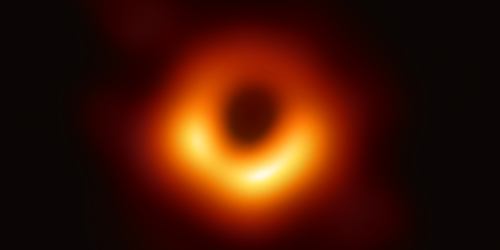Shock Waves Emanate from Dying Black Holes
Perhaps the most enigmatic objects in the Universe, black holes embody many unsolved paradoxes. One of their biggest mysteries is the “information paradox,” which emerges from the clashing predictions of quantum mechanics and general relativity. This paradox, which states that information both should and should not disappear when it enters a black hole, may arise because of the breakdown of Einstein’s theory at the black hole’s center. Now, Viqar Husain and colleagues at the University of New Brunswick, Canada, find that they can resolve the paradox by incorporating quantum gravity effects into their simulations, which indicate that when a black hole dies, the information it swallowed during its life is released back into the Universe through a gravitational shock wave [1].
The team considers a model black hole that forms when a large amount of “dust”—simplified matter that doesn’t exert any pressure—collapses under gravity. Tracking the dust particles throughout the black hole’s life allows the team to visualize how the dust moves inside a black hole and how it eventually leaves. They also incorporate quantum gravity into the model by assuming that at the microscopic level, space and time are discrete, coming in quantum “lumps.”
Analyzing the results of their simulations, the team uncovers three surprising findings: First, they see that matter “bounces” inside a black hole, moving both toward and away from the hole’s central point. Second, dying black holes emit a gravitational shock wave that should be detectable by a distant observer. Third, black holes have much shorter lives than previous theories predict. Husain says that the root of both findings is the removal by quantum gravity of a point of infinite density that Einstein’s theory predicts exists at a black hole’s center.
–Katherine Wright
Katherine Wright is the Deputy Editor of Physics Magazine.
References
- V. Husain et al., “Quantum gravity of dust collapse: Shock waves from black holes,” Phys. Rev. Lett. 128, 121301 (2022).




